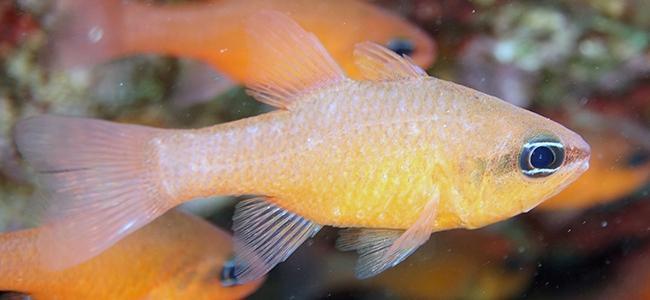The cardinalfish family (Apogonidae) belongs to the order Perciformes and can be found in tropical and subtropical waters of the Atlantic, Indian and Pacific oceans, where they are generally associated with lagoons and coral reefs. Although it is a predominantly marine family, there are 9 species of the genus Glossamina living in freshwater in New Guinea and Australia. They owe the name cardinalfish to the red coloration that the species of this family generally have, reminiscent in some way of the catholic coral habit of the cardinals.
The maximum length that cardinalfishes reach is 20 cm, although most species do not usually exceed 10 cm in length. The species of the cardinalfish family are characterized by very large eyes, and an oblique mouth also of large dimensions. The body is generally oval in shape and laterally compressed. Cardinalfishes have a dorsal fin separated into two regions. The first is formed by 6-8 spines. The second dorsal fin has 1 spine followed by 8-14 soft rays. Both dorsal fins are of similar width, and the first dorsal fin is usually somewhat lower than the second dorsal fin. The anal fin consists of 2 spines followed by 8-18 soft rays.
Most species are nocturnal, remaining hidden in crevices and caves during the day. As a striking feature, the males of many of the species are responsible for incubating the eggs, and this is done in the mouth. Therefore, once the eggs have been laid, the male will stop feeding until his offspring have hatched. The diet of cardinalfishes is varied, but mainly consists of zooplankton and small benthic invertebrates that they catch at dusk and during the night.
A total of 347 species have been described, all grouped into 33 different genera. Among the species we find some solitary, others that live in pairs and others that form more or less numerous schools. It is worth mentioning in the curiosities section the genus Siphamia, whose species have a luminous organ in the ventral region of the animal.

